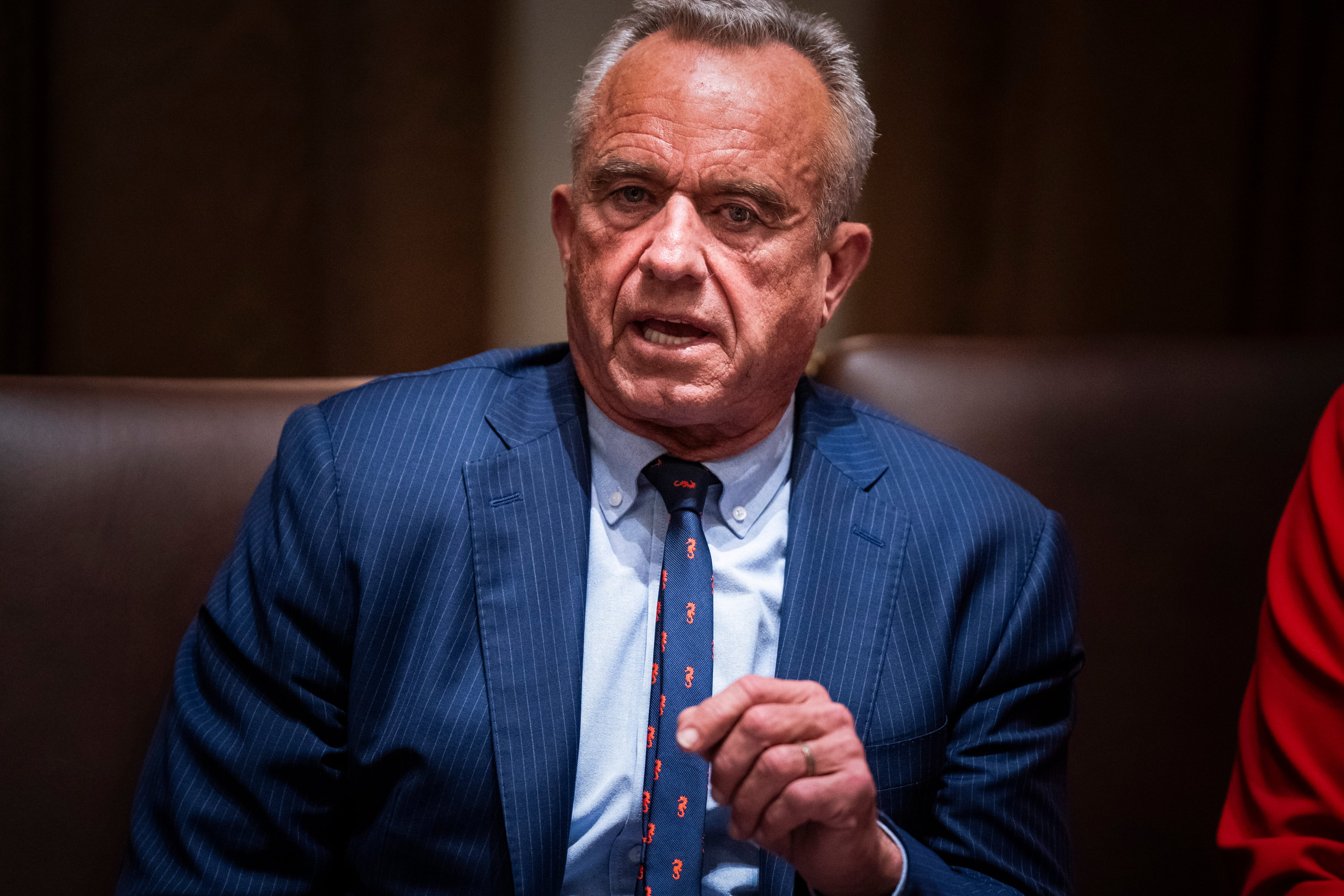This story was originally published by THE CITY. Sign up to get the latest New York City news delivered to you each morning. Public health, explained: Sign up to receive Healthbeat’s free New York City newsletter here.
New York City’s world-renowned tap water protects teeth as it quenches thirst, thanks to the fluoride it contains.
But there’s a possibility that could change if federal fluoride standards do — and federal officials from two different agencies have promised to revisit them.
U.S. Secretary of Health and Human Services Robert F. Kennedy Jr. last week said he intends to tell the U.S. Centers for Disease Control and Prevention to stop recommending fluoride in drinking water. He also urged states to ban the compound.
Environmental Protection Agency Administrator Lee Zeldin, standing with Kennedy, said he plans to review and update the standards related to fluoride in drinking water “based on the science,” referencing a federal study last year that identified potential harms associated with high levels of fluoride consumption. The EPA regulates fluoride in local drinking water systems, including New York City’s.
Federal officials’ sudden interest in fluoride in the water supply has local public health leaders concerned that New York could be forced to stop fluoridating its water, with potentially harmful consequences for public health.
More than 200 million Americans — or over 60% of the population — receive fluoridated tap water, including in New York City, where the Department of Environmental Protection has added small amounts of fluoride to its drinking water for about 60 years. Its purpose is to prevent tooth decay, as many scientific studies support.
Long-term exposure to levels of fluoride many times higher than what’s in New York City’s drinking water, however, has been linked with kidney disease and skeletal fluorosis, which can cause joint stiffness, weak bones or pain.
But as with his crusade against childhood vaccines, Kennedy has concluded, even prior to Zeldin’s promised federal review, that the correct amount of fluoride in drinking water is none.
“Fluoride should not be in our water,” he said at a press conference in Utah, which recently banned fluoride in public drinking water.
The possibility that the EPA’s fluoride standard could approach zero — banning fluoride as an additive to public drinking water — raises major concerns among local officials about dental health, given the vast inequalities across New York City.
“There are tremendous benefits to fluoridation, and if we were to stop doing it, the people who would be the most impacted are people who are living in poverty, people who don’t have access to routine dental care,” said Dr. Michelle Morse, acting health commissioner and chief medical officer at the city Department of Health and Mental Hygiene. “What we’re talking about is using a very safe, well studied, effective, and frankly healthy dose of fluoride in our water supply.”
In accordance with the city health code, the DEP adds fluoride to the water so the concentration is in line with what the state health department and CDC have characterized as the “optimal” level to prevent cavities: 0.7 milligrams per liter on average. (No water sample’s fluoride levels ever exceeded 0.8 milligrams per liter in 2024.)
That dose matters, according to scientists.
“These concentrations are well within safe levels and help to protect against dental issues,” said Shannon Roback, science director of the environmental group Riverkeeper. (Kennedy was the organization’s longtime lead attorney and public face.)
The medical consensus is that a small quantity of fluoride in the water supply is safe and beneficial for tooth and gum health, especially for children. Studies have shown that fluoride at lower levels strengthens teeth and reduces tooth decay by about 25% in children and adults, according to the American Dental Association. Fluoride replaces the minerals lost when acid, produced by bacteria in the mouth, breaks down tooth enamel.
Fernando Hugo, chair of the Department of Epidemiology and Health Promotion at the New York University College of Dentistry, said that studies examining other countries have shown that tooth decay is more prevalent in communities without fluoridated water than in those with it, but the difference is smaller than it used to be because of the availability of fluoridated toothpaste — a point Kennedy has emphasized.
But Hugo also noted that within communities without fluoride in the water, children’s dental health depends heavily on what their own families can provide.
“A cessation in water fluoridation will likely increase disparities,” Hugo said. “We can expect that low-income families will be impacted the most because, of course, they have less resources and less access to dental care, to fluoride toothpaste, you name it.”
As justification for potentially withdrawing fluoride from U.S. water, Kennedy and Zeldin have seized on a 2024 study from the National Toxicology Program of the Department of Health and Human Services, which found lower IQ levels in children associated with exposure to fluoride at levels higher than 1.5 milligrams per liter. That level is more than twice what the CDC currently says is “optimal,” yet still lower than what the EPA currently deems as acceptable.
The EPA’s standard for fluoride as a contaminant is 4 milligrams per liter. In contrast, the New York State Department of Health sets its standard at 2.2 milligrams per liter.
“A sensible tightening of the federal standard is something from a public health perspective that makes sense,” said Eric Goldstein, director of the New York City environment program at the Natural Resources Defense Council, “but since it’s a careful balancing act, the issues are complicated.”
Samantha is a senior reporter for THE CITY, where she covers climate, resiliency, housing and development. Email Samantha at smaldonado@thecity.nyc.







